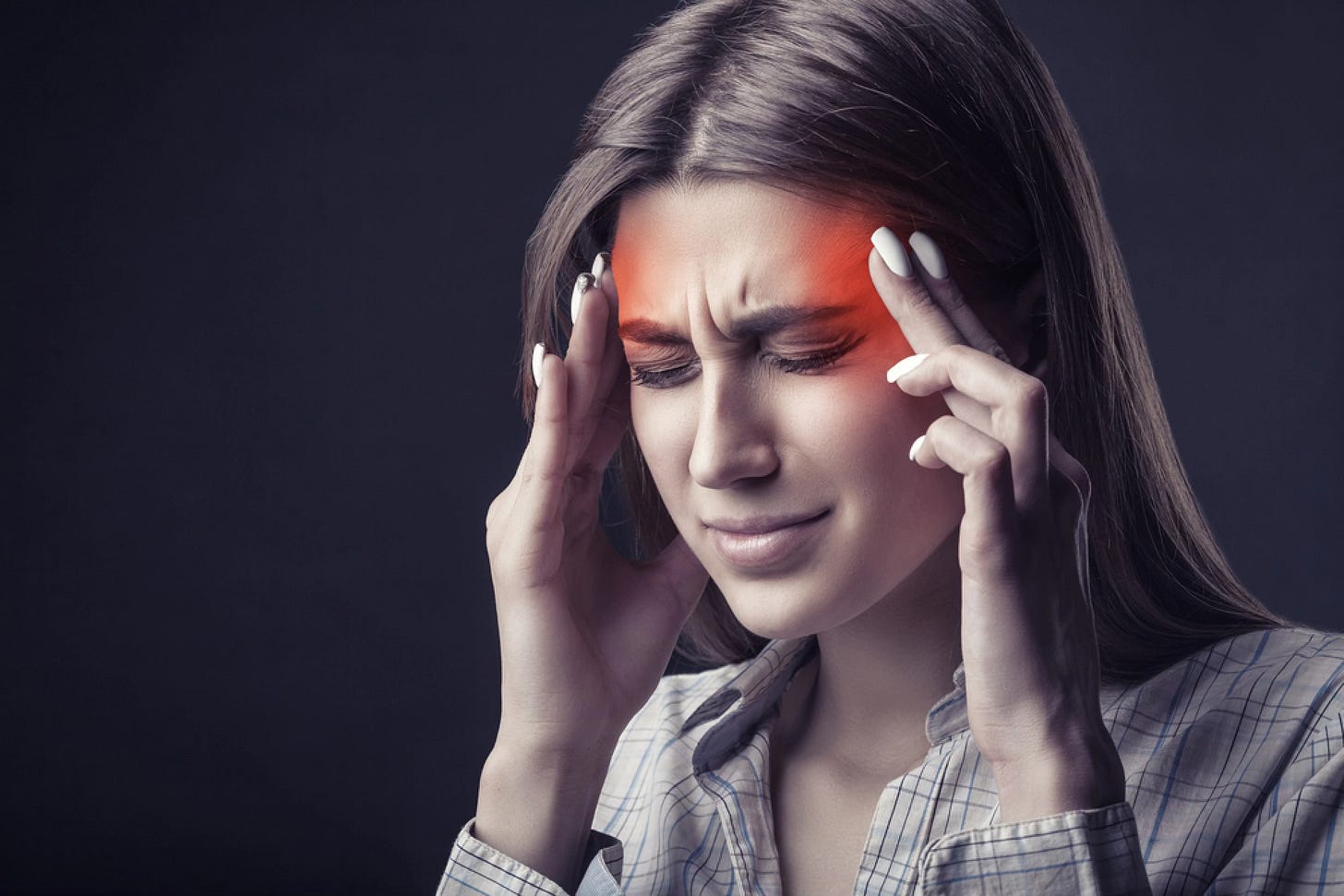H is for Headache: Can Cannabis Really Soothe the Throbbing Pain?
What science—and real people—say about using THC and CBD for migraines and tension headaches.
Tired of riding the migraine rollercoaster? You’re not alone—and cannabis might be the off-ramp you’ve been searching for.
For decades, pharmaceuticals like triptans and ibuprofen have ruled the world of headache relief. But more and more people—especially those navigating menopause, chronic stress, or aging-related inflammation—are turning to a plant-based alternative: cannabis. And the science? It's catching up fast.
Let’s break down what current research really says about cannabis and headaches—and hear from real people who are using it every day to manage pain, nausea, and sleep disruption.
What the Studies Say About Cannabis and Headaches
A 2016 study in Pharmacotherapy followed 121 medical cannabis patients and found that their monthly migraines dropped from 10.4 to 4.6. Inhaled cannabis—either smoked or vaporized—was the most effective method for fast relief.
One reader told us:
“Flower is always the gold standard for medical cannabis, but the smoke can trigger my migraines. It’s a 50/50 gamble. When it works, it works really well.”
So while inhalation works quickly for many, the method matters—and it’s not one-size-fits-all.
Fast Relief, Real-Time Results
In a 2019 study published in The Journal of Pain, researchers analyzed over 12,000 cannabis sessions logged via a tracking app. Results showed:
Headache severity dropped by 47.3%
Migraine intensity dropped by 49.6%
But here’s the twist: higher doses didn’t always mean better relief. In fact, regular high-THC use was linked to rebound headaches in some users.
“A 1:1 indica tincture under the tongue every 4 hours seems to alleviate the pain for about 2 hours… which isn’t perfect, but it’s something.”
“Sometimes if I smoke after taking my meds, they seem to work faster. It also gives me an appetite, which combats my migraine nausea.”
THC & CBD vs. Prescription Meds
A clinical trial presented at the European Academy of Neurology compared a daily 200 mg THC/CBD blend to 25 mg of amitriptyline, a standard migraine medication. The result? Similar levels of pain relief—without the common side effects like grogginess and dry mouth that often come with pharmaceuticals.
How Cannabis Might Work for Headaches
Cannabis interacts with your endocannabinoid system (ECS)—a key regulator of pain, inflammation, and mood. Researchers believe cannabis helps by:
Reducing neuroinflammation, calming compounds like CGRP and prostaglandins
Balancing serotonin, which plays a central role in migraine onset
Addressing possible endocannabinoid deficiency, a theory proposed by neurologist Dr. Ethan Russo, suggesting migraines may stem from a lack of endogenous cannabinoids
What About CBD? Is It Enough on Its Own?
CBD can be a powerful tool for inflammation and anxiety—two big triggers for migraines. Many people find relief with a balanced THC:CBD formula, especially in low doses (think 5–10mg each), used preventively.
But it’s not for everyone.
“Personally, I don’t get nearly as much relief with products high in CBD. It seems to block some of THC’s effects for me and makes the THC wear off faster. Weirdly, high doses of CBD even trigger headaches for me.”
Others have a different experience:
“I’ve read a lot of research. The consensus seems to be that it works best when there’s at least an equal amount of THC and CBD—especially in lower doses around 7% THC.”
Finding the Right Fit
Cannabis is deeply personal. For some, edibles offer consistent, long-lasting effects thanks to how they’re metabolized into 11-hydroxy-THC in the liver.
“Edibles can hit harder because of how they’re metabolized. For some people that’s a good thing, for others it’s inconsistent.”
Others find that vapes work faster—but quality matters:
“Carts are often made from distillate, which can be a trigger. If you use vapes, stick with solventless live resin from trusted sources.”
Are There Risks?
Yes. While cannabis is generally well-tolerated, it’s important to watch for overuse, especially of high-THC products. Too much, too often can lead to:
Medication overuse headaches
Increased baseline sensitivity
Reduced long-term effectiveness
🧠 Pro tip: Start low. Go slow. Track your response.
Final Thoughts: Is Cannabis Worth Trying for Headaches?
If migraines or tension headaches are interfering with your life, cannabis might be worth exploring. While more large-scale clinical trials are needed, early evidence—and real-world experiences—suggest real potential for relief.
Just remember: your delivery method, dose, and body chemistry matter.
This post is part of our ongoing A–Z of Cannabis series, where we explore the science and real-world impact of cannabis—one letter at a time.
So far in the series:
B is for Breast Cancer - How Women Are Using Cannabis for Relief, Recovery, and Resilience
G is for Glaucoma - What Cannabis Can (and Can’t) Do for Your Eyes
Disclaimer: The information provided on this blog is for educational purposes only and is not a substitute for professional medical advice. Always consult your healthcare provider before starting or changing any treatments, including cannabis use.




